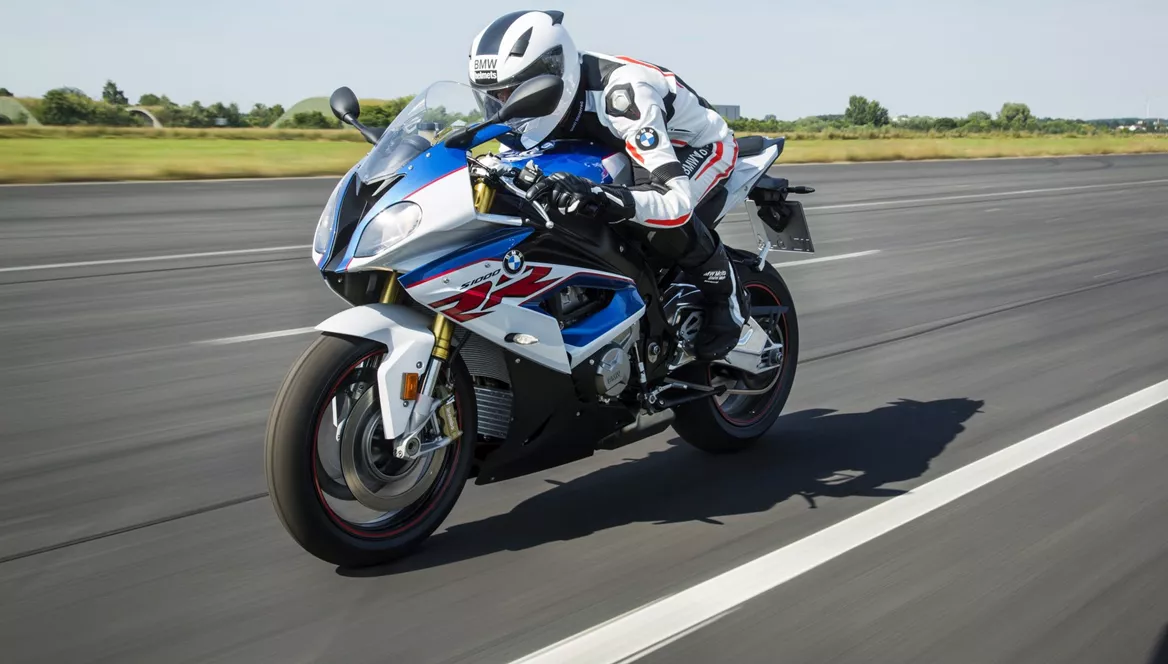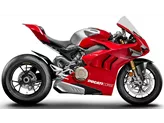BMW S 1000 RR 2017 vs. Yamaha R1 2015

BMW S 1000 RR 2017

Yamaha R1 2015
Overview - BMW S 1000 RR 2017 vs Yamaha R1 2015
The BMW S 1000 RR model year 2017 and the Yamaha R1 model year 2015 are both powerful supersport motorcycles with impressive technical specifications. Let's compare these two bikes in terms of their engine and drive train, suspension, chassis, brakes, dimensions and weights, as well as their strengths and weaknesses.
In terms of engine and drive train, the BMW S 1000 RR 2017 is equipped with a 999cc engine that produces 199 horsepower and 113 Nm of torque. It has a bore of 80 mm and a stroke of 49.7 mm, with a compression ratio of 13. The bike features a 4-cylinder engine with 4 valves per cylinder. On the other hand, the Yamaha R1 2015 has a slightly smaller 998cc engine that produces 200 horsepower and 112.4 Nm of torque. It has a bore of 79 mm and a stroke of 50.9 mm, with a compression ratio of 13. Like the BMW, it also has a 4-cylinder engine with 4 valves per cylinder.
Both bikes feature upside-down telescopic fork front suspension and an aluminum frame. However, the BMW S 1000 RR 2017 has a twin tube frame, while the Yamaha R1 2015 has a Deltabox frame. This difference in frame type may result in variations in handling and stability.

BMW S 1000 RR 2017
In terms of brakes, both bikes have double disk front brakes. The BMW S 1000 RR 2017 has a front tire width of 120 mm and a front tire diameter of 17 inches, while the Yamaha R1 2015 has the same specifications for the front tire. Both bikes also have a rear tire width of 190 mm and a rear tire diameter of 17 inches.
When it comes to dimensions and weights, the BMW S 1000 RR 2017 has a wheelbase of 1438 mm and a seat height of 815 mm. It has a kerb weight (with ABS) of 208 kg and a fuel tank capacity of 17.5 liters. On the other hand, the Yamaha R1 2015 has a slightly shorter wheelbase of 1405 mm and a higher seat height of 855 mm. It has a kerb weight (with ABS) of 199 kg and a fuel tank capacity of 17 liters.
Now let's discuss the strengths and weaknesses of each bike. The BMW S 1000 RR 2017 has the advantage of being available with complete electronic equipment and high-quality features. Its engine is powerful and easy to control, and it offers a comfortable seating position even for taller riders. The bike also has a good chassis that performs well on both the road and at trackdays.
On the other hand, the Yamaha R1 2015 is known for its crazy sound and rev-happy engine with a strong peak. It provides a great racing feeling in the saddle and boasts a superior electronics package. The bike is also praised for its high-quality workmanship.

Yamaha R1 2015
However, the BMW S 1000 RR 2017 does have some weaknesses. It may experience brake fade on the racetrack under high load, and its ride quality, while suitable for trackdays, may not be good enough for racing. Additionally, some riders find the bike's appearance to be dull despite its up-to-date technology.
Similarly, the Yamaha R1 2015 has a couple of weaknesses. It may experience torque sag in the middle, which can affect its performance. Some riders also find that it lacks stability in the braking zone.
In conclusion, both the BMW S 1000 RR 2017 and the Yamaha R1 2015 are powerful and impressive supersport motorcycles. While the BMW offers a complete electronic equipment and a comfortable seating position, the Yamaha provides a thrilling racing experience and superior electronics. However, the BMW may suffer from brake fade and less than ideal ride quality, while the Yamaha may have torque sag and stability issues in the braking zone. Ultimately, the choice between these two bikes will depend on the rider's preferences and priorities.
Technical Specifications BMW S 1000 RR 2017 compared to Yamaha R1 2015
Pros and Cons in comparison
Pros and Cons in comparison
BMW S 1000 RR 2017

The well-balanced universal talent will also be at the forefront of many comparison tests in 2017. It still scores with the outstanding engine and the universal and complete equipment.
Yamaha R1 2015

The new R1 is a big hit and no longer compares to the previous model. This was considered a good country road bike and heavy investments had to be made for excursions to the race track. Now it is the other way round. The new R1 has been developed with a clear focus on the race track. The electronics package seems outstanding, technology freaks will get their money's worth. Yamaha fans have to buy it, they finally have a worthy motorbike. The R1 has slight weaknesses when braking - it becomes a little unstable here. If you want to buy a ready-made racing bike without having to work on the chassis, you'd better go for the R1M. The Öhlins electronic suspension works perfectly and has no weaknesses. For pure racetrack use, the second weakness of the R1 can easily be ironed out. The torque hole in the middle can be easily ironed out with a new mapping.
Price Comparison Avarage Market Price BMW S 1000 RR vs Yamaha R1
There are a few key differences between a BMW S 1000 RR 2017 and a Yamaha R1 2015. There are the same number of bikes of both models available on the 1000PS.de marketplace, specifically 9. It takes less time to sell a Yamaha R1 with 76 days compared to 96 days for the BMW S 1000 RR. Since model year 2010 1000PS.de editors have written 135 reviews for the BMW S 1000 RR and 80 reviews for the Yamaha R1 since model year 2005. The first review for the BMW S 1000 RR was published on 16/04/2008 and now has more than 4,000 views. This compares to more than 3,900 views for the first review on Yamaha R1 published on 28/04/2003.
























